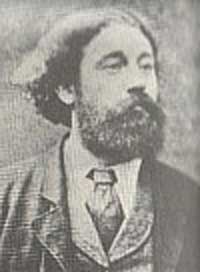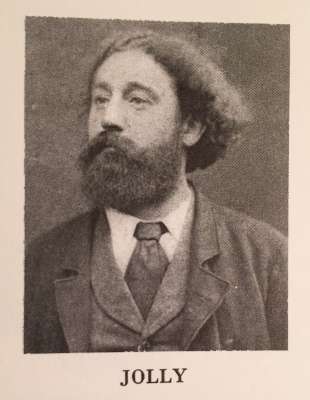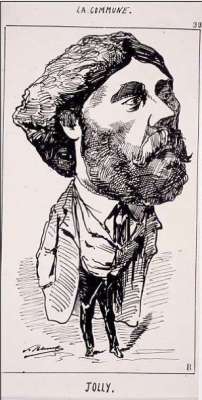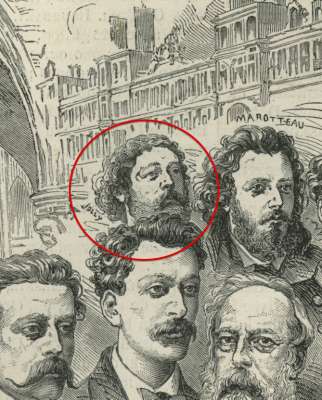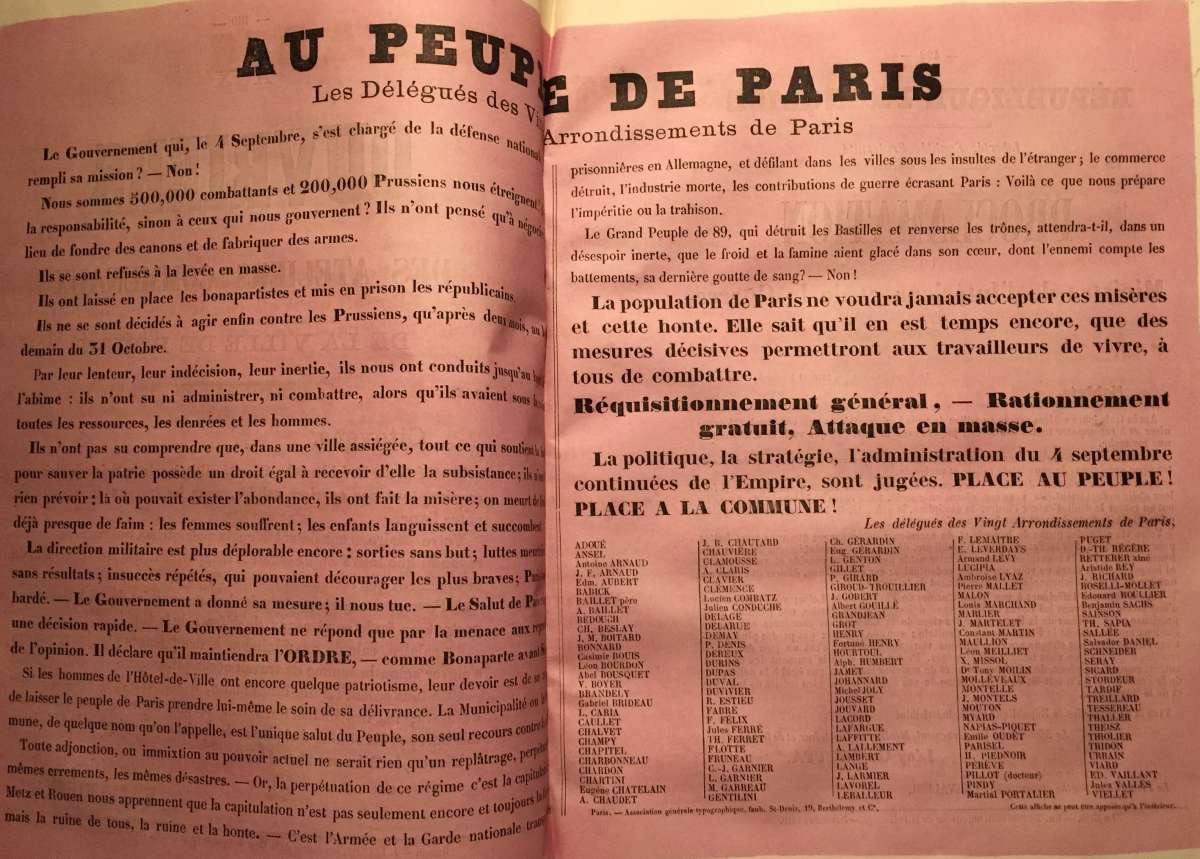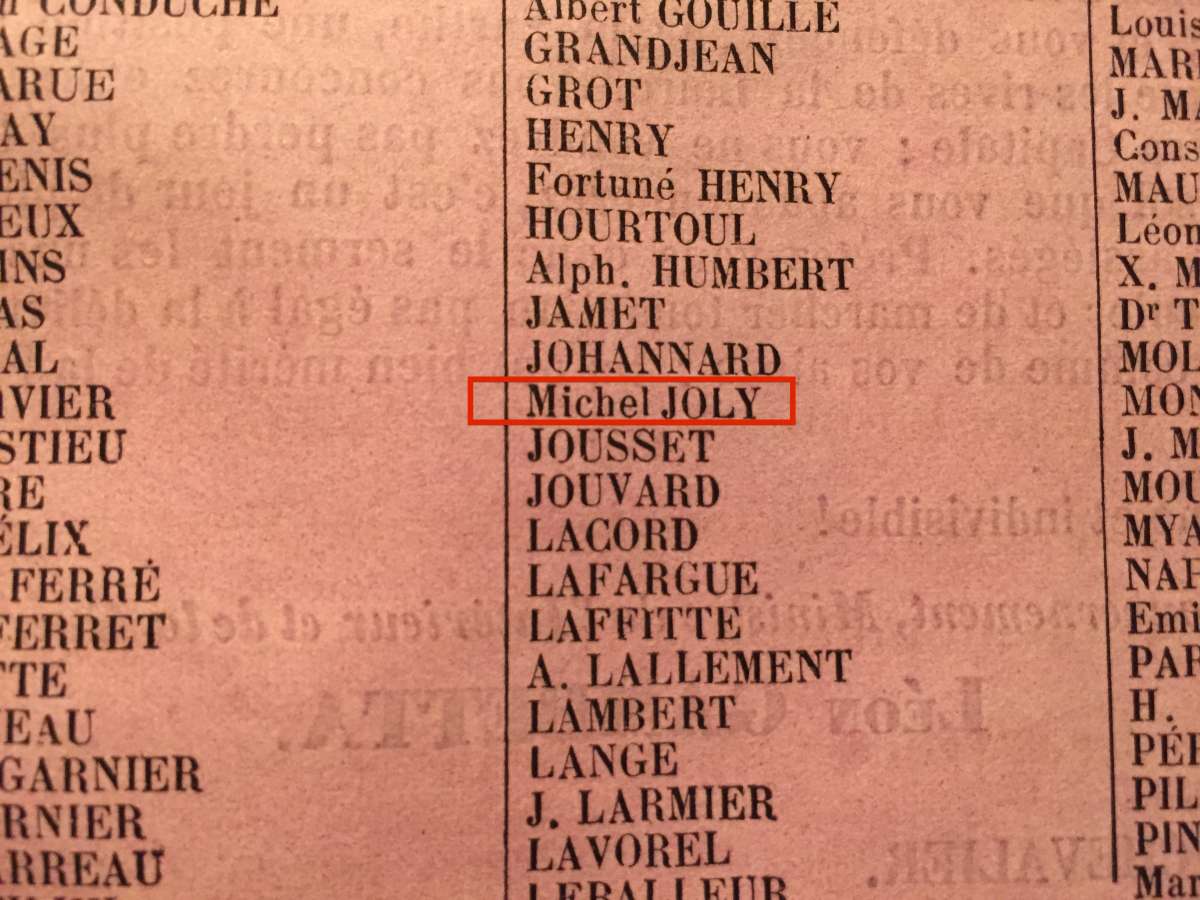In the last couple of years, I have been researching the life and works of a French man named Maurice Joly. He was a lawyer and a writer, best known to modern reader for his book “Dialogue in Hell between Machiavelli and Montesquieu” (Dialogue aux enfers entre Machiavel et Montesquieu ou la politique de Machiavel au XIX siècle. Bruxelles: A. Mertens et fils, 1864). The only known portrait of said Maurice Joly was published on Wikipedia and elsewhere on the Internet, both the left facing and the right facing version.
The source of that portrait was not indicated. All I could find was that one website designer or administrator copied it from some other website. Portrait on Fig. 1. was found on websites that use left-to-right script and portrait on Fig. 2 – on websites that use right-to-left script. Anyways, there was no evidence that the man depicted was indeed Maurice Joly. After all, in January 2016 I managed to buy an old album of photographs from a dealer in Budapest. It was a collection of 50 albumen photographic portraits of the men of la Commune de Paris (The Paris Commune, 1871). It was compiled by an unknown individual, probably shortly after la Commune was suppressed. Among these portraits was one that made me buy the album for a hefty sum.
 Fig. 3. Eugène Appert, albumen photograph. Front. |
 Fig. 4. Eugène Appert, albumen photograph. Back. |
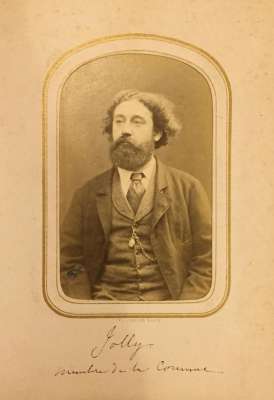 Fig. 5. ‘La Commune’ album page. |
Now I’ve got the photographer’s name: Eugène Appert, 1830-1871. Albumen photograph in the size of carte de visite (104 х 64 mm); marked by hand “Jolly” on the back (pencil), and Jolly | Membre de la Commune on the frame. There was no first name, and the last name was spelled with a double “L”, while Maurice Joly was spelled with one “L”. I continued my investigation, as the evidence was still too soft. Then, at the website of Northwestern University Library (Evanston, Illinois), I found a similar portrait (Fig. 6):

Fig. 6. Courtesy Charles Deering McCormick Library of Special Collections, Northwestern University Library.
Information supplied by the library was:
| Title: Jolly, Membre de la Commune |
| Date: [1871] |
| Physical Description of Original Image: 11 x 7 cm |
| Proper Name Subject: Jolly, d. 1871 |
| Genre/Form: Albumen, Cartes de visite, Portraits |
| Linking Data: Forms part of album 10 |
| Accession No.: 1-675 |
Nick Munagian, Library Assistant, kindly emailed me an image of the album page, which read: Jolly. Membre de la | Commune, Délégué aux dévastations | des Eglises, Fusillé le 21 Mai 71 dans le parc Monceau. Jolly again had been written with a double “L”. Besides, it was known that the writer and lawyer Maurice Joly shot himself in July 1878, and was not “fusile le 21 mai 71″ (executed by shooting) in Park Monceau in Paris or elsewhere.
Later in January 2016, being in Paris and walking down Quai des Grands Augustins along the row of bouquinistes, I spotted a book: Paris au front d’insurgé. La Commune en images; Charles Feld avec la collaboration de François Hincker. Circle d’Art et Livre-Club Diderot, Paris, 1971. On the margin of page 14, among portraits of the other members of la Commune, I saw a familiar face:
Again, Jolly was with a double “L”, and there was no any reference to the portrait in the text.
About the same time Dr. Jerome van Wijland, Director of Bibliothèque de l’Académie nationale de médecine kindly supplied me with an image from an album of Paul Klenck ‘La Commune, 74 charges des membres de la Commune’; Imprimerie Talons, 1871; #33). Jerome has found it at Musée d’art et d’histoire de Saint-Denis. Markings: La Commune; 33; Jolly with double “L”; signed: P. Klenck.
After my return to San Francisco I managed to buy on eBay L’Illustration, Journal Universel, Samedi 15 Juillet 1871, # 1481. On page 45 was a woodcut by someone J. Robert: Les hommes de la commune: Jolly with double “L” was there, looking above the shoulders of more prominent members.
Finally, at an antique bookshop in Paris on rue Vivienne I discovered one more portrait of the same enigmatic individual. In Armand Dayot’s L’Invasion. Le Siège. La Commune (Ernest Flammarion, Paris, 1901) on page 321 I saw the same face, and this time the legend was saying: Joly | Membre de la municipalité provisoire | du 1er arrondissement | (Condamné à perpétuité.)
Now I’ve got Joly with a single “L”. It was good news but as far as I know about Joly’s life, he was never a member of la municipalité provisoire of the 1er arrondissement, nor was he condemned to a life sentence. I looked at Maurice Joly’s case (№22693) at the Les archives de la préfecture de police in Paris – I did not found a word about his activity as a communard. But, I thought, at the time of la Commune Armand Dayot was 20 years old, and he could have known himself that the man on the portrait was Joly, that this man was a Membre de la municipalité provisoire du 1er arrondissement, and that this man was Condamné à perpétuité. Dayot simply could have known all this because he was physically there, in Paris during the Commune.
Well, I thought, let’s assume that Armand Dayot was right and that Joly was a member of la Commune. Then there should be some material traces. I found two leaflets from the days of the Commune, signed, among the others, by someone Joly (Les murailles politiques françaises, depuis le 18 Juillet 1870 jusqu’au 25 Mai 1871; Affiches Françaises et Allemandes // La Guerre – La Commune; Paris – Province // Le Chevalier, Editeur, Paris, 1874):
If the signee of these proclamations was Maurice Joly, then YES, he was a member of the provisional municipality of 1er arrondissement, and YES, Joly a.k.a. Jolly on all these portraits had a good chance of being Maurice Joly. The issue with double “L” could not be a serious problem, as people then were not that careful about spelling names. In Robert Lowry Sibbet’s book The Siege of Paris, Vol 1, Meyers Printing and Publishing House, Harrisburg, PA, 1892, on pages 218-9, where the author describes the so called ‘Le soulèvement du 31 octobre 1870‘, Jolly with a double “L” appears as one of the Hôtel-de-Ville intruders. However, it is known from innumerable sources (including the autobiographic Maurice Joly, son passé, son programme par lui-même, Paris: Lacroix, Verbɶckhoven et Co., 1870), that the man who led the delegation to Hôtel-de-Ville on October 31st 1870 was indeed Maurice Joly.
The strongest argument for this perception (Maurice Joly – Member of the provisional municipality of 1st arrondissement and a member of the Commune) came from a book by Henry Rollin L’apocalypse de notre temps; Gallimard. Paris, 1939. The book itself is a voluminous treatise directed against the Nazi propaganda, and especially against the “Protocols of the Elders of Zion”. Chapter VIII contains the first and most complete biography of Maurice Joly. Later authors (e.g. F. Leclercq, préface to Maurice Joly, Plébiscite / épilogue du dialogue aux enfers entre Machiavel et Montesquieu, précédé de César / Paris-Zanzibar, 1996) who wrote about Maurice Joly did not go further than citing Rollin’s book.
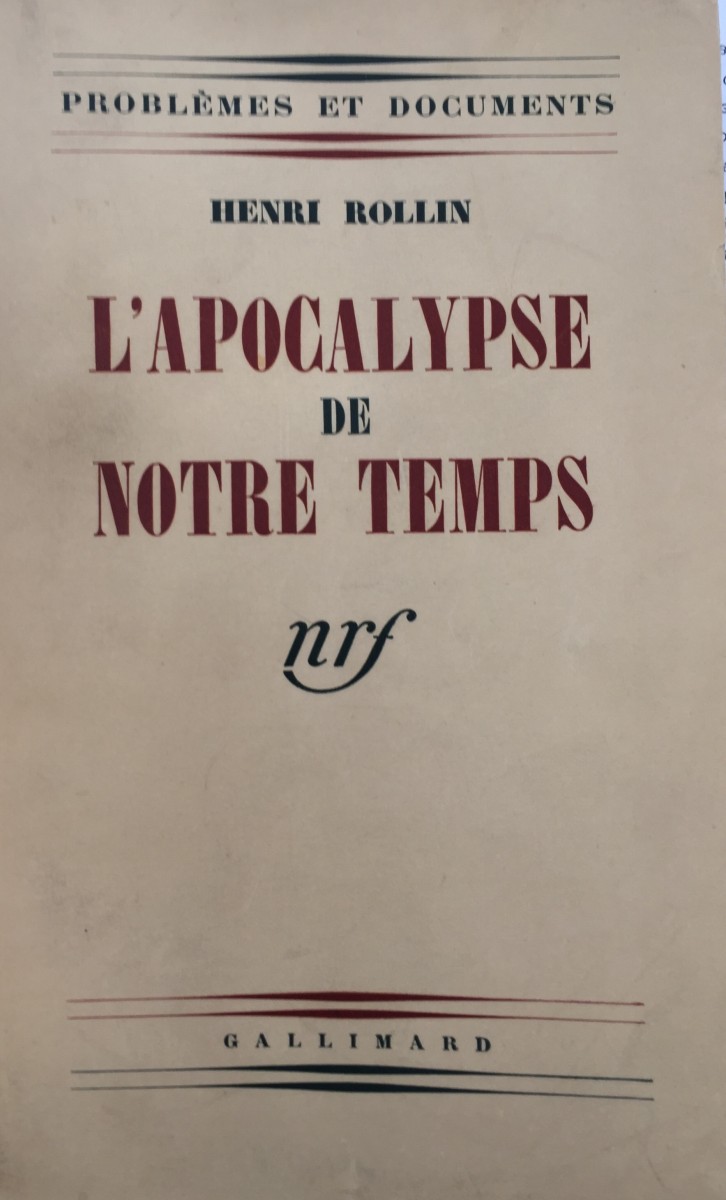 Fig. 14. Henri Rollin. L’Apocalypse de notre temps. Cover. |
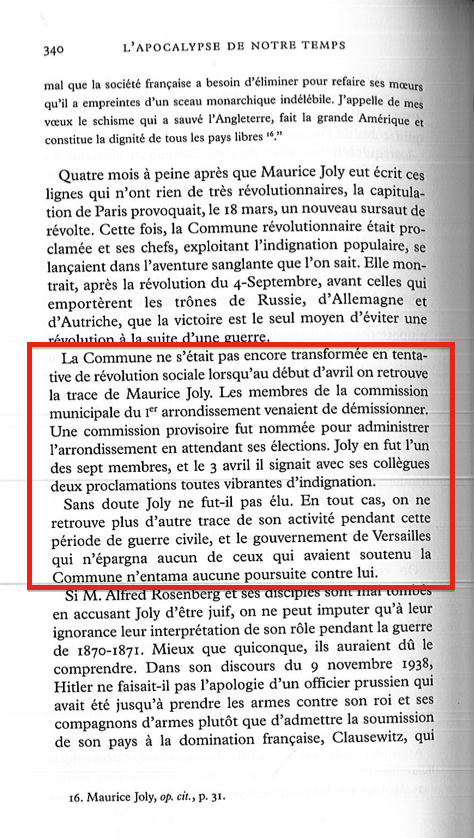 Fig. 15. Henri Rollin. L’Apocalypse de notre temps. Chapitre VIII, page 340. |
Upon consideration of all of the evidence at hand, I came to conclusion, that the man on the portrait of my interest was Maurice Joly, a parisian lawyer and the author of “Dialogue in Hell”. I published the portrait (see Fig. 3) on Maurice Joly’s Wikipedia page and excused myself from further evidence gathering. I also published this portrait on the back cover of my Russian translation of Dialogue aux enfers entre Machiavel et Montesquieu. I supplied an image to Jean-Philippe Huelin, vice-mayor of Lons-le-Saunier (Maurice Joly’s hometown), who was doing research on Maurice Joly, and recently published a paper about the latter. Job done.
But life happened to be more complex than I have expected. On June 28 of the year 2016, doing some reading about L‘Affiche rouge (‘Red Poster’, a leaflet calling for The Commune, signed by the delegation of Twenty Arrondissements), and looking at the list of 140 signees, I saw something that attracted my attention:
Michel Joly! Michel Joly, not Maurice Joly was la Commune member. I looked at all the evidence I gathered before: I found that I haven’t seen a single document with the first name “Maurice”. I came to the wrong conclusion just because somebody hanged a portrait of some Jolly or Joly on the worldwide web and said it’s Maurice Joly. How silly was I and how credulous! Henry Rollin, F. Leclercq, and all other Maurice Joly’s biographers were wrong.
Quick search for Michel Joly revealed a short article at La Lanterne, 21 Juin 1879, page 2, column 4:
“On signale parmi les amnistiés, les nommés: …Michel Joly, délégué municipal du 1er arrondissement et officier payeur au 112e bataillon…”. It means that Michel Joly, a bookkeeper of the 112th battalion of the National Guard, was the member of the Commune; that Michel Joly signed the leaflets on behalf of the provisional municipality of the 1st arrondissement in april 1871 (Fig. 12 and 13); that Michel Joly was condemned to a life sentence and pardoned in 1879 with the other members of the Commune; and that Michel Joly is the person on Eugene Appert’s photograph in question. So far I didn’t find any other traces of Michel Joly, before or after the Commune.
Some Michel Joly, age 39, glimpsed at La Lanterne, 9 Janvier 1878, but I was not sure if this was our communard or another Michel Joly. If they were same, then at the time of la Commune (and on the portrait) he was 32 years old. And if he was pardoned in 1879, then he did not die from the accident, in spite of what the paper have said. Hm…
Now I wonder if my investigation is over or did it just make a new turn?



